Abstract
Changes in skeletal age and height of 34 Leeds schoolboys were studied in a four year longitudinal survey covering puberty. Tanner and Whitehouse method TW2 was used. In each boy, skeletal age advanced rapidly during puberty, reaching a peak at an age related to that of peak height velocity. The importance of recognising that this acceleration of bone age is normal is stressed, in order to avoid attributing it to other causes.
Full text
PDF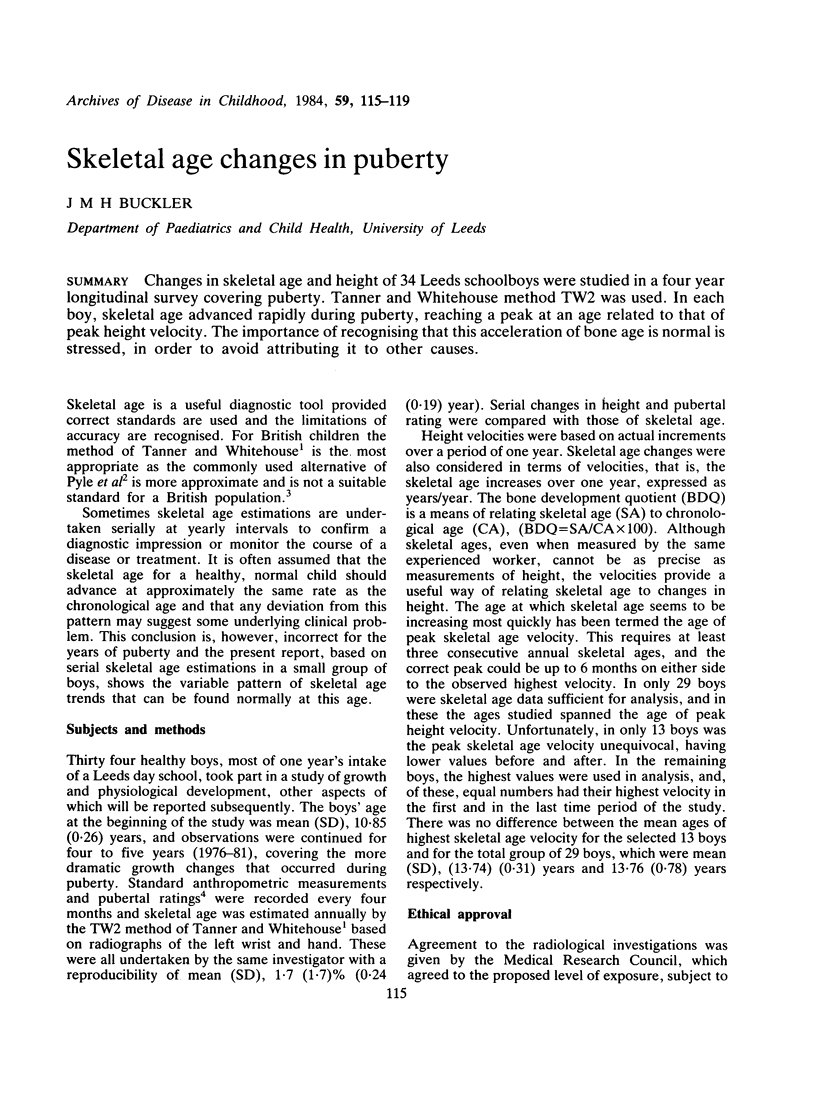
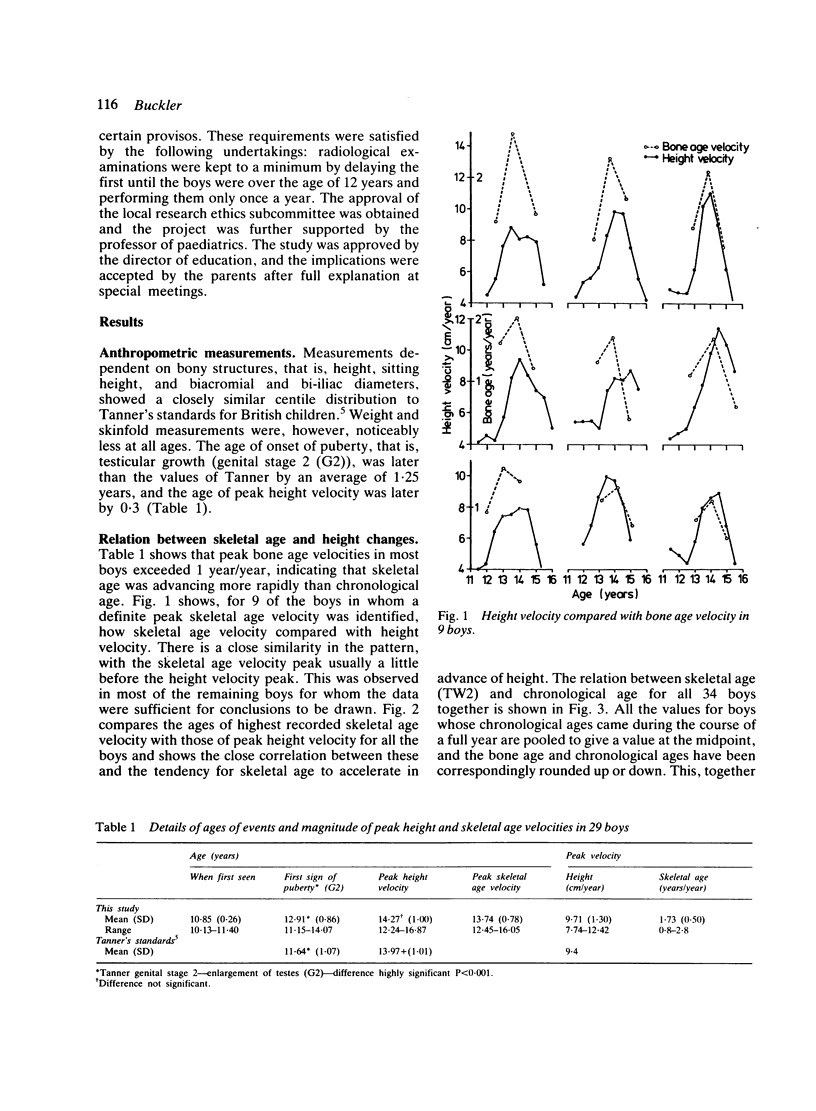
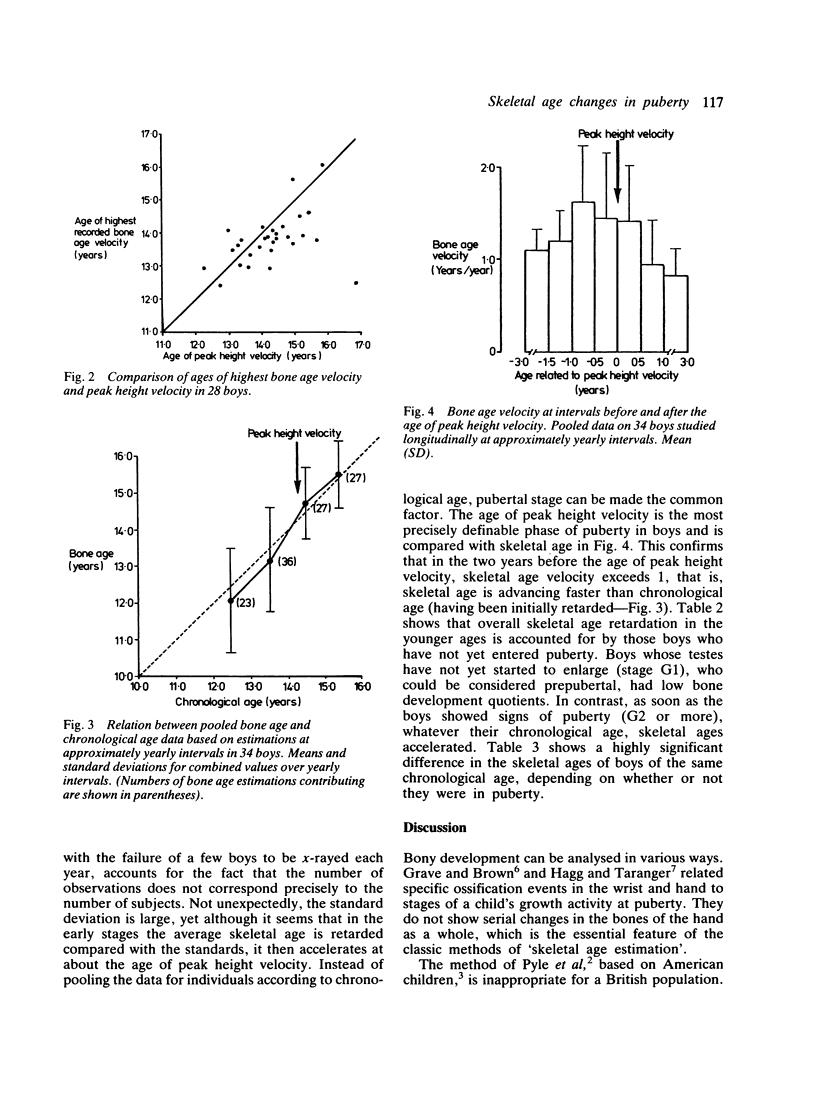
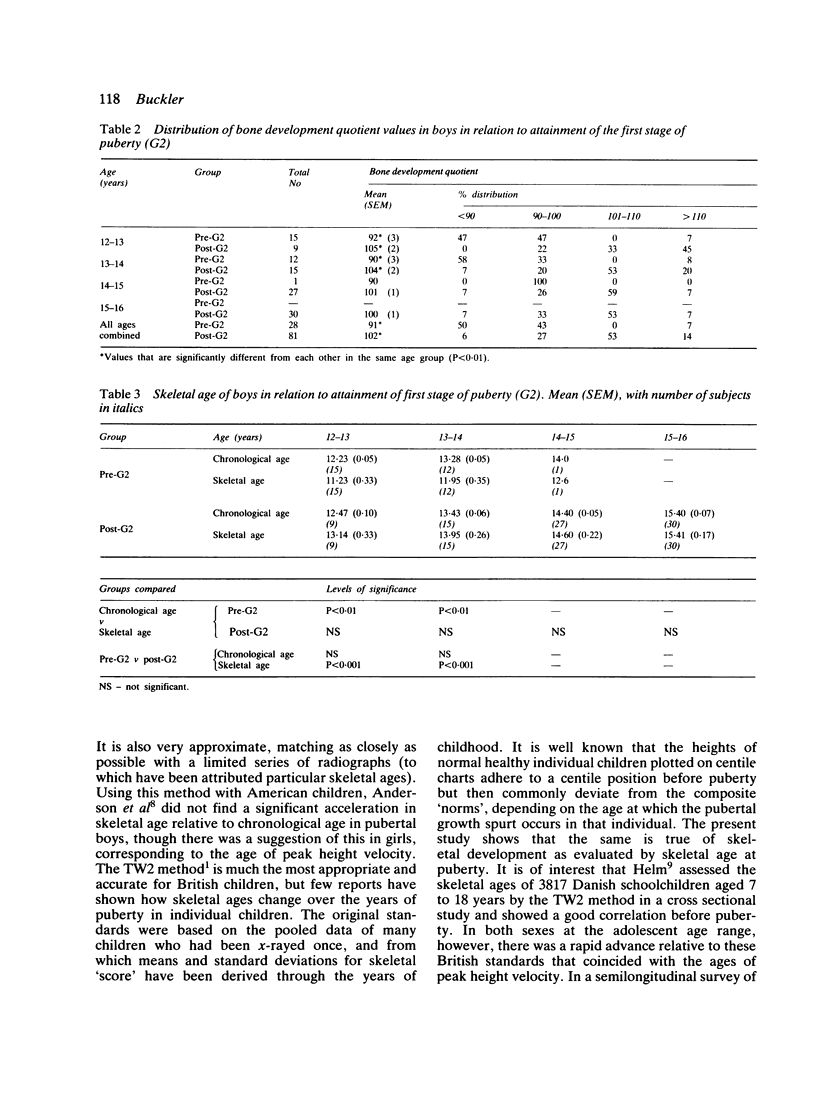
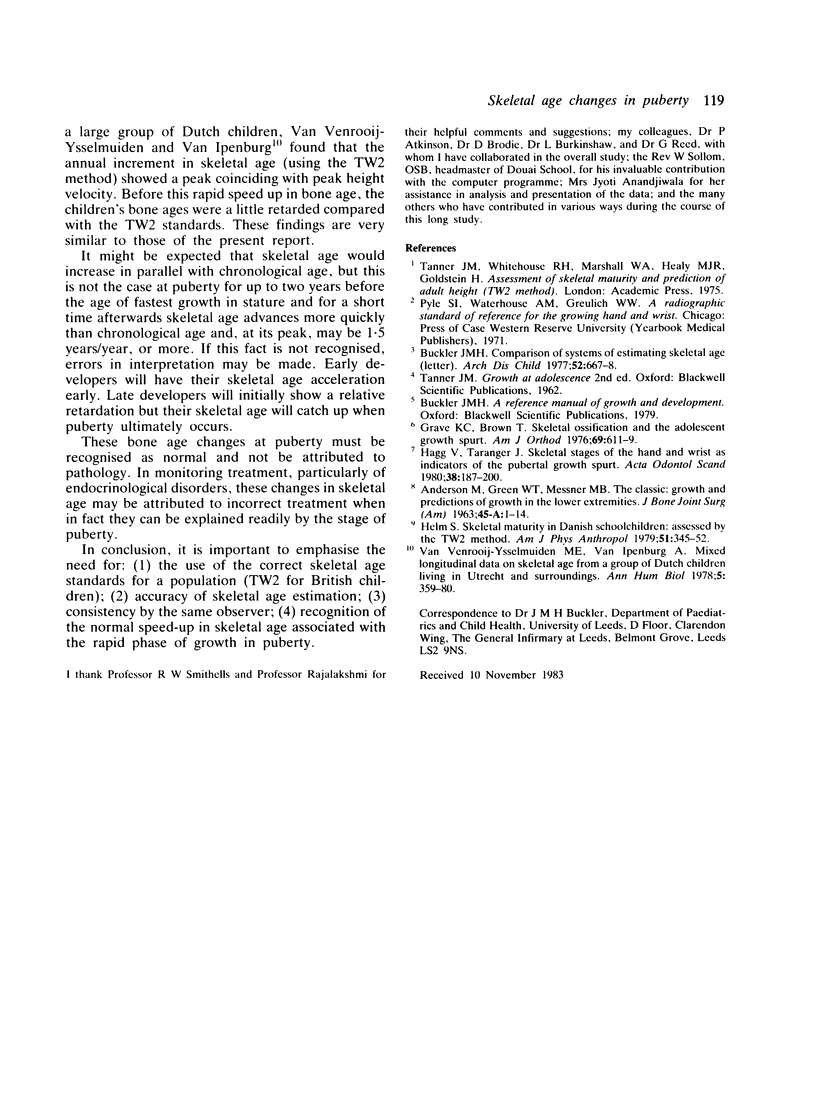
Selected References
These references are in PubMed. This may not be the complete list of references from this article.
- Buckler J. M. Comparison of systems of estimating skeletal age. Arch Dis Child. 1977 Aug;52(8):667–668. doi: 10.1136/adc.52.8.667-b. [DOI] [PMC free article] [PubMed] [Google Scholar]
- Grave K. C., Brown T. Skeletal ossification and the adolescent growth spurt. Am J Orthod. 1976 Jun;69(6):611–619. doi: 10.1016/0002-9416(76)90143-3. [DOI] [PubMed] [Google Scholar]
- Helm S. Skeletal maturity in Danish schoolchildren assessed by the TW2 method. Am J Phys Anthropol. 1979 Sep;51(3):345–352. doi: 10.1002/ajpa.1330510305. [DOI] [PubMed] [Google Scholar]
- Hägg U., Taranger J. Skeletal stages of the hand and wrist as indicators of the pubertal growth spurt. Acta Odontol Scand. 1980;38(3):187–200. doi: 10.3109/00016358009004719. [DOI] [PubMed] [Google Scholar]
- van Venrooij-Ysselmuiden M. E., van Ipenburg A. Mixed longitudinal data on skeletal age from a group of Dutch children living in Utrecht and surroundings. Ann Hum Biol. 1978 Jul;5(4):359–380. doi: 10.1080/03014467800003001. [DOI] [PubMed] [Google Scholar]


